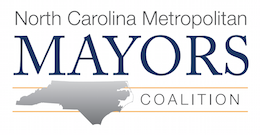Smog limit challenges state (News and Observer)
Your future could include a little extra in your paycheck for commuting to work by bus or for carpooling with your neighbors. You might have to get used to limits on mowing your lawn on sweltering summer afternoons.
You’ll breathe easier for your trouble.
Public officials across the state will soon be devising ways to cajole residents and require businesses to cut smog. The reason: Much of North Carolina would flunk the federal pollution standards in a nationwide proposal Thursday to require tougher limits on smog.
Cities and areas that don’t reduce smog could face the loss of federal dollars to build highways – a sanction imposed on Atlanta in the 1990s and one currently facing Charlotte, which has some of the state’s dirtiest air.
The new limits, intended to protect public health, are the strictest ever proposed by the Environmental Protection Agency. They will put hundreds of counties across the nation out of compliance and force local officials to find creative new ways to squeeze more pollution reductions from transportation, heavy industry and residents.
In proposing the new limits, the Obama administration acknowledged that the tougher rules could cost electric utilities and oil companies as much as $90 billion in compliance costs. But the federal agency justified the expense by citing the potential savings – between $13 billion and $100 billion per year, depending on just where the limit is set, in avoided medical costs and missed workdays from reductions in asthma, bronchitis and other health complications.
When the EPA’s proposal is settled, as early as next year, North Carolina will have to present federal regulators with a state plan to meet the new standards. The plan, which could raise power costs and force changes to driving habits, will come from the N.C. Department of Environmental and Natural Resources.
“We will probably have to look at further controls in power plants and other industry,” said Tom Mather, spokesman for the agency. “We have to demonstrate to the EPA that we’re making a good-faith effort to comply.”
Metro areas in violation
The EPA proposed a range for acceptable smog levels – 60 to 70 parts ozone per 1 billion parts of air – lower than the current limit of 75 parts per billion. The proposal will be subject to public comment and hearings. It could be challenged in court by business groups and others who said Thursday that the EPA’s proposals lack a scientific basis and would impose a financial hardship on businesses and local communities.
Spokesmen from Duke Energy and Progress Energy said they’re reviewing the proposal, but they both cited costly upgrades being made to power plants under the state’s Clean Smokestacks Act. Raleigh-based Progress Energy has spent $2 billion already to install scrubbers and other pollution-trapping equipment.
The main culprits
Ground-level ozone, a chemical compound that irritates the lungs, results from the interaction of nitrogen oxides and other compounds with sunlight and heat. Vehicles of all sorts are the single biggest source of the smog, followed by power plants.
A preliminary analysis in the Department of Environmental and Natural Resources shows that within the proposed range, the limits could put every metropolitan area in the state out of compliance with federal smog limits.
Urban areas fail
Even on the permissive end of the range, 70 parts per billion, all metro areas would fail except Wilmington and a handful of counties in the mountains.
Charlotte is already violating an older, more lenient smog standard, and city planners had until spring to show how they will fix the problem. Thursday’s ruling would put the Triangle, Triad and other areas in the same situation.
Ed Johnson, director of the Capital Area Metropolitan Planning Organization, said this state has met past smog standards because automobiles have been getting more efficient and cleaner.
Transportation options include increasing bus routes, restricting downtown parking, producing cleaner fuels, building more efficient cars, and promoting regional planning strategies that reduce driving distances to work and stores.
“So far we have not had to do anything to curtail people’s ability to drive,” Johnson said. “That may come, but it hasn’t yet.”
Published Fri, Jan 08, 2010 04:54 AM
Modified Fri, Jan 08, 2010 05:01 AM


